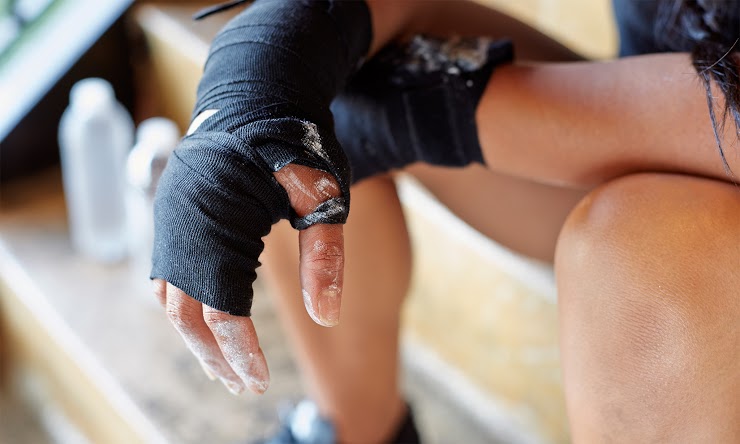
If you’ve ever watched the summer games on TV, you’ve probably seen some of the world’s top athletes sporting colorful strips of tape stretched in complex patterns across their limbs. Likewise, those who frequent Milwaukee gyms might spot some exercisers with bands of white tape wrapped around their ankles or wrists.
These aren’t fashion statements, but rather athletic tape—long believed to relieve pain, reduce inflammation, and enhance performance by supporting and stabilizing muscles and connective tissue. Taping can be used as a preventive measure, too, especially for activities like CrossFit or weightlifting that can be hard on the hands. Read on to see how this sporting-good standby figures into the regimens of athletes everywhere.
What does it do?
Wrapped around ankles, wrists, and other joints, the traditional stiff, white athletic tape—sometimes called surgical or medical tape—acts as a brace to restrict movement and thus prevent injury. The white color comes from zinc oxide, an antibacterial substance, to ward off infections. Many studies have shown that the tape reduces strain and helps prevent sprains, especially when used on ankles.
Is all athletic tape the same?
No. Kinesiology tape is a higher-tech take on the white tape that sports therapists have used for ages. This type of athletic tape allows for a much greater range of motion. It’s designed to act as a lightweight, external support to muscles, ligaments, and tendons that allows athletes to work through mild pain and injuries.
How do I put it on?
Getting taped up is best left to an athletic trainer, who knows all the best techniques to make sure joints are properly immobilized. Furthermore, putting athletic tape on oneself can be a cumbersome undertaking. Kinesiology tape, on the other hand, is designed for self-sticking. All athletes have to do is spread the tape flat on the body area in question. For best results, users should remove hair from the area beforehand.
This is all backed by scientific research, right?
Not exactly. Although many of the studies performed on kinesiology tape thus far haven’t shown significant results, that doesn’t mean that athletes aren’t getting something out of it. Even if it only supplies the confidence to reach for a little more force or speed, kinesiology tape likely will stick around.






